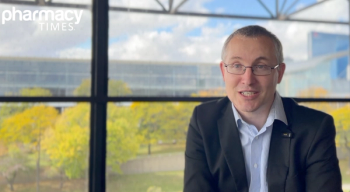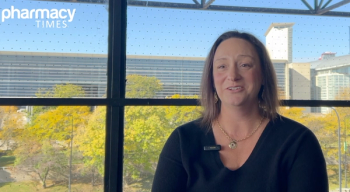
Expert: Biosimilars May Not Be Cheap, But Are the ‘Very Minimum Helping to Make Cancer Therapies More Accessible Today’
Pharmacists are the best resource at cancer center practices to ensure patients with cancer do not need to make the choice to stop or delay therapy due to financial reasons.
The second worst thing patients hear other than, ‘You have cancer,’ is ‘This is how much you owe,’ explained Andre D. Harvin, PharmD, MS, executive director of pharmacy, oncology, Cone Health, during his keynote address at the
When biosimilars first came to market, providers and patients alike had questions regarding how much real financial benefit biosimilars could provide in comparison to the reference product, according to Harvin. This was particularly true for patients who were already on patient assistance programs (PAPs) for the reference drug. For these patients, despite biosimilars being cheaper, their cost remained incredibly high.
“Yes, it's cheaper. But you're talking about the difference between a Lamborghini and Ferrari; they're still expensive, [and patients] still can't afford them,” Harvin said during the presentation. “So what’s the difference if it's like 20% or 30% cheaper if it's still really, really expensive?”
Pharmacists have been working extensively to provide answers to these questions, according to Harvin. Fortunately, many companies manufacturing biosimilars also provide PAPs that are similar or sometimes more robust than the programs offered through the company making the reference drug. Yet, the work of connecting patients to the resources that they qualify for can remain challenging.
During
“But that's a really big part of the conversation,” Harvin said during the interview. “Yes, we are one of the most expensive departments to have in a cancer center practice, but when you look at the revenue that's generated for those services, it typically far outpaces the costs associated with that. When you look at the finances of your oncology practice, you're going to see that typically pharmacy is at the top. If not, they're going to be in the top 2 in terms of your profit center.”
Without the financial work of the pharmacy, oncology practices that have implemented biosimilars may not yet be fully maximizing their bottom-line financials, according to Harvin. In part, this may be due to some of the challenges practices face when working to connect patients with the right resources for financial assistance or when determining the best biosimilar in terms of reimbursement.
“That’s the part that’s actually a lot harder,” Harvin said during the interview. “There are so many nuances and so many pieces there that I think a lot of practices don’t understand.”
For example, one such nuance Harvin noted during the interview was that biosimilars are not, in fact, generics. Instead, they are drugs that are highly similar to the reference product or the brand name product.
“A biosimilar is just a new kind of classification that the FDA put out to say that we’re going to recognize these not as generics, but as drugs that are highly similar that show no clinically significant differences there,” Harvin said.
Following this designation by the FDA, insurance companies then decided that, although there may be several biosimilars on the market, they would only choose a few to be their preferred drugs. The other biosimilars in the same pharmaceutical class, even if they have the same principal biologic, would then not be designated as preferred.
“So, therefore, it’s hard for any practice to say, ‘You know what, we’re just going to put everybody on this pegfilgrastim (Neulasta; Amgen Inc) biosimilar,’ because you may have several different payors that have a [different] preferred drug,” Harvin said.
Generally, providers are unable to track the month-to-month changes that can occur around which biosimilars are preferred by which insurance companies; however, pharmacists can.
“[For providers,] remembering this month that Blue Cross Blue Shield likes this pegfilgrastim and not that pegfilgrastim—that’s not something we want them to spend their time on,” Harvin said during the interview. “But who can do that is your pharmacists. And we can find ways to actually leverage that decision more from our electronic medical record (EMR) perspective, where we actually build it in to say, ‘Okay, let’s reference their insurance, let’s see what is available in terms of the preferred [drug] for the 2 or 3 different biosimilars that they say they will allow.’”
Going even further, Harvin noted that pharmacists can also analyze the best net acquisition cost or net cost recovery for each of the 3 different biosimilars. Since the prices may be different for each, the reimbursement rates from a payer may be different as well, which can impact the net margin for each of the 3 biosimilars, according to Harvin.
“Even though they’re all [biosimilars for] pegfilgrastim, [the price] may be drastically different from one product to the next,” Harvin said. “So, the question would be, ‘Well, if you're going to administer a prefilled syringe of pegfilgrastim, and you've got 3 options, and one can give you a higher reimbursement rate for doing the same exact work, wouldn't you choose that one?’ That's what we do.”
Harvin noted that patients also make decisions based on the financials of their treatment as well. In a recent survey, 74% of patients with cancer responded that they would skip or delay medical care based on cost.
“We know that in cancer care, that could mean death. But we know that they’re doing that because of the financial toxicity sometimes associated with [treatment],” Harvin said during the presentation. “Now we can sit here and say, ‘Well, hey, I don't set the prices.’ But we participate. So we have a role to play as well.”
Although biosimilars may not be perfect, they are currently the very minimum that’s helping to make cancer therapies a little bit more accessible, according to Harvin. Because of the therapeutic interchange policy, oncology practices can establish systems internally to designate certain drugs as being interchangeable, allowing pharmacists to take the lead on switching a reference drug for a biosimilar based on the particular financials of that drug for that patient.
“If a patient qualifies to move to a biosimilar, and we find that it’s cheaper for them, we understand the financials will be better and faster for the patient as well, so our pharmacists can automatically change it,” Harvin said. “We also found a way to automate that as well. So within our EMR now, it can look and say, ‘What is that patient's insurance, which biosimilars are preferred on that insurance, which one provides the best financials for us?’”
Harvin explained that at his practice, before a pharmacist was running the biosimilar interchange process, the background upkeep for making biosimilar interchange decisions was extensive. However, with the pharmacy department at the table, pharmacists are able to handle these nuances on behalf of their oncology practice.
“Pharmacists, first and foremost, can be some of the most powerful advocates for you and your program,” Harvin said. “This is what we do. We are here for the patients at the end of the day. We are fantastic at bringing new information to the table. You have to unleash us and make sure that we’re at elbow level, not only with providers, but with patients as well.”
Reference
Harvin AD. Robots, Biologics, and Advocates: Lessons from the Pharmacy. Presented at: ACCC Annual Meeting & Cancer Center Business Summit in Washington, DC; March 10, 2023.
Newsletter
Stay informed on drug updates, treatment guidelines, and pharmacy practice trends—subscribe to Pharmacy Times for weekly clinical insights.





















































































































































































































